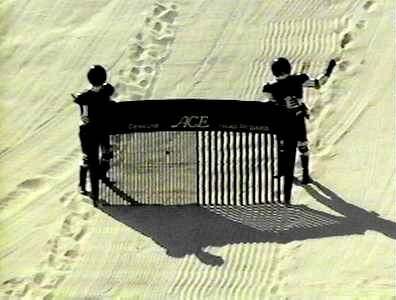beastie wrote:'m curious as to why you apparently won't read the cited Ray article. I thought you were an academic; if so, you would simply log onto your university's library and read the article yourself.
And, yes, there have been depictions of horses in Mesoamerican art. (The man riding the horse at Chitzenitza is a famous example; the toy horse pulling the cart is another; see references in Cyrus Gordon's book, "Before Columbus").
I'm not sure depictions in art have much meaning here. The Museum of Anthropologie in Mexico City (I've been there; seen them myself) have a depiction of a bearded European man dating back to around 600 AD to 1000 AD; there is a mural depicting two races of people, white and brown, fighting each other. My guide (a moonlighting university professor) at the Museum told me that these pieces of art demonstrated (1) Europeon contact with MesoAmerica long before Columbus, and (2) a now-extinct light-skinned peoples. But, what of it?
What do you mean by "literature?" The only "literature" of which I am familiar is Popul Vuh and since that post dates the conquest I put little faith in it.
You put no faith in the observations of the conquistidors?
I'm not an academic and don't have access to Ray's article. Have you read it yourself? Moreover, I want recent references. When LDS apologists offer a reference to support the possible existence of an anachronistic item in the Book of Mormon,
it is often either from an article in the fifties, without further support, or a reference from a quack like Barry Fell.
I have never heard of Cyrus Gordon nor his book, but from what I read from google searches, he sounds like another Barry Fell. He certainly isn't an expert in Mesoamerica, he's a scholar of ancient languages.
http://www.nytimes.com/2001/04/09/obitu ... 64&ei=5070
Now, tell me more about the man riding the horse and the horse pulling the cart. You know, the "famous" examples. If you give me enough details I may be able to figure out what you are talking about. It's a guessing game right now, because none of the books I've read about ancient Mesoamerica have mentioned these "famous" examples, and I don't recall sorenson or Brant gardner using these famous examples, either.
And what makes you think the bearded man was European?
And what statements of the conquistadors support the idea that horses were already in ancient America?
Like I said, I'm not an expert, but I have done quite a bit of reading about ancient Mesoamerica in general, and also read a history of the horse in specific. Not one of these texts offered any of these evidences you refer to, which makes me suspect they are Barry Fell quality.
Sorry; I am not familiar with "Berry Fell." I guess that is a pretty easy way to dispose of my experts. Cool tactic. I'll try it next time.
Cyrus Gordon was a professor of anthropology at Brandeis. He wrote a book examining relationships between Middle East cultures and the Americas. His particular expertise was in linguistics and artifacts. His conclusion was that there was Hebraic influence in America. He cites as evidence unscientific finds by amateurs, which he plainly identifies as such, and scientific finds using modern techniques. He distinguishes between the two.
One of books I cited you above (I guess it must have been another Berry Fell reference!!!) is a study of the influence of the horse upon Native American culture. It concludes that the horse pre-dated Europeon arrival, and the book bases its conclusions upon the journal entries from the Spanish in mesoAmerican and some journal entries of northern Europeans elsewhere about the horses they say the Indians were riding. Book reviews of the book I've seen conclude that the only possible explanation for pre-Columbian horses would be the release by Scandinavians.
I had a university professor from a Mexican university point the sculpture out to me and inform me that it was obviously European. His conclusion was that Norsemen must have travelled to Mexico around 600 A.D. It really is a well-known sculpture; I've seen it on the museum's website in the past.
I don't know who Brandt Gardner is.
I reiterate my question to you. When you told me that pre-Columbian literature does not reference horses, to what literature were you referring? Or were you just blowing smoke? (Because, I can assure you that other than the Gold Plates, there was no literature.) You know what? You're really not worthy of discussion with me; you don't know basic sources; you can't check my sources; you rely upon phantom bogeymen I've never heard of but whom you imagine are aligned with me. So, be gone with you. For now.
rcrocket
